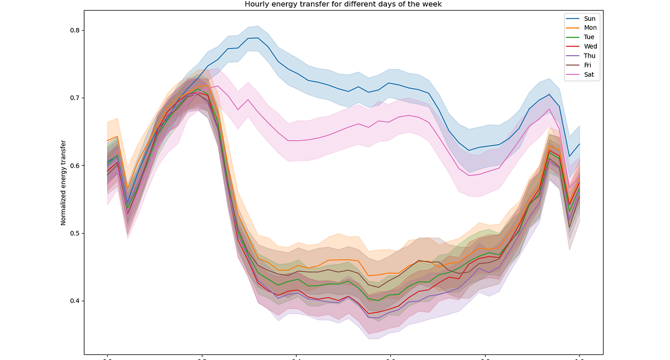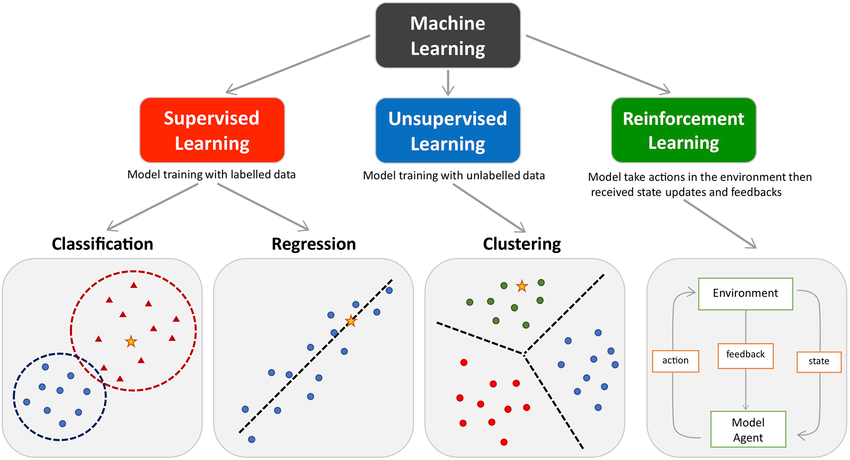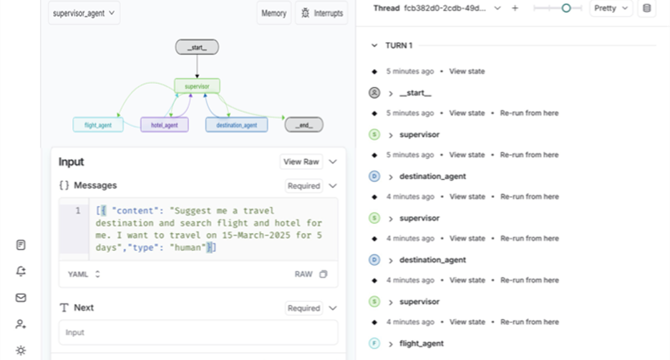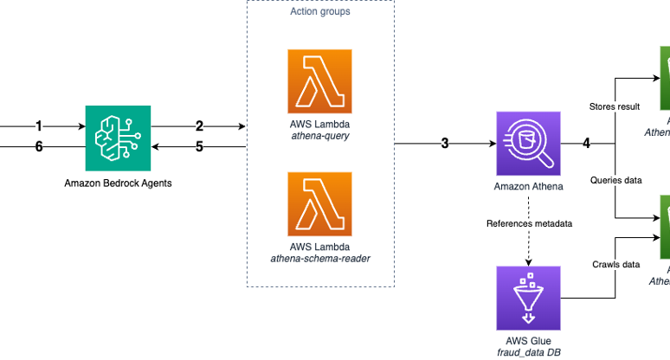ML News
Marktechpost
192

Transformers Gain Robust Multidimensional Positional Understanding: University of Manchester Researchers Introduce a Unified Lie Algebra Framework for N-Dimensional Rotary Position Embedding (RoPE)
- Transformers lack a mechanism for encoding order, but Rotary Position Embedding (RoPE) has been a popular solution for facilitating relative spatial understanding.
- Scaling RoPE to handle multidimensional spatial data has been a challenge, as current designs treat each axis independently and fail to capture interdependence.
- University of Manchester researchers introduced a method that extends RoPE into N dimensions using Lie group and Lie algebra theory, ensuring relativity and reversibility of positional encodings.
- The method offers a mathematically complete solution, allowing for learning inter-dimensional relationships and scaling to complex N-dimensional data, improving Transformer architectures.
Read Full Article
11 Likes
Medium
4

Image Credit: Medium
Time Series Analysis: Reading the Rhythms Hidden in Data
- Traditional modeling approaches often fail to capture complex temporal dynamics such as seasonality and nonlinear relationships.
- Time-aware cross-validation reveals the limitations of linear regression on the classic AirPassengers dataset, particularly in modeling seasonal fluctuations.
- The results indicate the necessity of enhanced feature engineering or more advanced models to improve forecasting performance in time series analysis.
- Incorporating seasonality or adopting architectures like ARIMA or LSTM can significantly enhance time series forecasting.
Read Full Article
Like
Medium
44

Image Credit: Medium
What is AI, Really?
- AI is an umbrella term encompassing various concepts and models related to human intelligence tasks.
- The history of AI dates back to the 1950s, with a formal field beginning at the Dartmouth Conference in 1956.
- AI has experienced waves of hype and progress, with notable milestones like IBM's Deep Blue and AlphaGo victories.
- AI operates based on learning from data, where supervised learning involves teaching models patterns from training data.
- Linear regression is a simple machine learning model that predicts data points' relationships.
- The learning process involves using a loss function to measure errors and adjusting parameters through gradient descent.
- AI subfields include machine learning, deep learning, and generative AI, each tailored for specific tasks.
- AI systems can exhibit intelligence through problem-solving and pattern recognition but lack true understanding, feelings, or consciousness.
- Models like ChatGPT generate responses based on statistical likelihoods rather than true comprehension.
- AI is synthetic intelligence, mimicking human thinking without replicating consciousness, relying on math and data for operations.
Read Full Article
2 Likes
Medium
152
Image Credit: Medium
Predicting Disease Categories Using TF-IDF, KNN & Streamlit
- A disease prediction web app was developed using TF-IDF, KNN, and Streamlit.
- The app uses a small medical dataset to predict disease categories based on user input.
- TF-IDF is used to convert textual data into numeric feature vectors for machine learning.
- The app is deployed using Streamlit Cloud and can be accessed through a live URL.
Read Full Article
9 Likes
Medium
116

Image Credit: Medium
Harnessing Data Science for Wildfire Management
- Wildfires in the United States, especially in California, pose significant challenges due to their destructive nature and widespread impact on communities and ecosystems.
- Traditional wildfire management methods lack real-time information and prevent proactive responses.
- Data science, machine learning, and remote sensing technologies offer innovative solutions to detect, track, and predict wildfire behavior accurately.
- AI-powered systems analyze historical data to identify patterns and aid emergency responders in taking preemptive actions.
- Regression analysis, clustering methods, and neural networks are utilized to enhance wildfire prediction models.
- Technological advancements include the use of high-resolution Earth-observing sensors, LSTM networks, and autonomous aerial vehicles for real-time monitoring and prevention.
- Institutions like NASA, UC Berkeley, USC, and UC San Diego are leading the way in AI-driven wildfire management initiatives.
- AI models like cWGAN combine generative AI with satellite imagery to analyze historical data and accurately predict wildfire behavior.
- The WIFIRE Lab at UC San Diego develops AI technologies such as BurnPro3D and Firemap for wildfire risk assessment and real-time monitoring.
- The integration of data science and AI in wildfire management is essential for improving preparedness, response, and mitigation strategies in the face of escalating wildfire threats.
Read Full Article
7 Likes
Medium
92

Image Credit: Medium
Why I’ll Never Use Claude Again
- The author expresses dissatisfaction with using Claude for their coding and brainstorming needs.
- They mention that the tax season prompted them to download their invoices for business expenses.
- When attempting to access invoices on Claude's billing page, they find that there are none available.
- The author states that Claude is not as effective as their current coding buddy, Google Gemini, and they express their disappointment with the product.
Read Full Article
5 Likes
Marktechpost
225

Multimodal Models Don’t Need Late Fusion: Apple Researchers Show Early-Fusion Architectures are more Scalable, Efficient, and Modality-Agnostic
- Multimodal AI faces challenges with late-fusion strategies, impacting cross-modality dependencies and scaling complexity.
- Researchers explore early-fusion models for efficient multimodal integration and scaling properties.
- Study compares early-fusion and late-fusion models, showing early-fusion's efficiency and scalability advantages.
- Sparse architectures like Mixture of Experts offer performance boosts and prioritize training tokens over active parameters.
- Native multimodal models follow scaling patterns similar to language models and demonstrate modality-specific specialization.
- Experiments reveal scalability of multimodal models, with MoE models outperforming dense models at smaller sizes.
- Early-fusion models perform better at lower compute budgets and are more efficient to train than late-fusion models.
- Sparse architectures show enhanced capability in handling heterogeneous data through modality specialization.
- Overall, early-fusion architectures with dynamic parameter allocation offer a promising direction for efficient multimodal AI systems.
- Study by Sorbonne University and Apple challenges conventional architectural assumptions for multimodal AI models.
Read Full Article
13 Likes
Mit
72

Image Credit: Mit
Training LLMs to self-detoxify their language
- A new method called self-disciplined autoregressive sampling (SASA) enables large language models (LLMs) to moderate their own language, avoiding toxic language without affecting fluency.
- SASA is a decoding algorithm that can identify toxic/nontoxic subspaces within the LLM's internal representation, guiding language generation to be less toxic.
- The system re-weights sampling probabilities for tokens based on toxicity values and proximity to a classifier boundary, promoting less toxic language output.
- By using a linear classifier on the learned subspace of the LLM's embedding, SASA steers language generation away from harmful or biased content one token at a time.
- The research achieved reduced toxic language generation without sacrificing fluency, showcasing SASA's effectiveness in aligning language output with human values.
- SASA was tested on LLMs of varying sizes and datasets, significantly reducing toxic language while maintaining integrity and fairness in language generation.
- Methods like LLM retraining and external reward models are costly and time-consuming, highlighting the efficiency and efficacy of SASA in promoting healthy language.
- The study emphasized the importance of mitigating harmful language generation and providing guidelines for value-aligned language outputs in AI systems.
- SASA's approach of analyzing proximity to toxic thresholds during language generation offers a practical and accessible method for improving language quality in LLMs.
- The use of SASA in detoxifying language outputs showed promise in reducing toxicity and bias, contributing to fairer and more principled language generation.
- The research team demonstrated that balancing language fluency and toxicity reduction is achievable with techniques like SASA, paving the way for more responsible language models.
Read Full Article
4 Likes
Arstechnica
48

Image Credit: Arstechnica
When is 4.1 greater than 4.5? When it’s OpenAI’s newest model.
- OpenAI has announced the release of GPT-4.1 models, a new series of AI language models.
- GPT-4.1 models have a 1 million token context window, enabling them to process large amounts of text in a single conversation.
- These models outperform the previous GPT-4o model in various areas.
- However, GPT-4.1 will only be accessible through the developer API and not in the consumer ChatGPT interface.
Read Full Article
2 Likes
Medium
209

Image Credit: Medium
The Truth About Innovation Nobody Wants to Admit…
- Most of what's sold as “innovation” today is BS.
- True innovation is messy, breaking things and threatening the status quo.
- Innovation is violent, destroying before it creates.
- The market cares about delivering faster, smarter, and cheaper solutions, not legacy systems.
Read Full Article
12 Likes
Medium
153

Image Credit: Medium
When Machines Learn to Feel: Are We Ready for the Rise of Empathetic AI?
- Machines are learning to listen and recognize human emotion, not just speech.
- The next step is for AI to respond to human emotion and show empathy.
- Our voices carry secrets that AI is learning to decipher.
- The rise of empathetic AI raises questions about trust, vulnerability, and human experience.
Read Full Article
9 Likes
Medium
330

My Journey into Data Science: Challenges, Growth, and What I’ve Learned So Far
- Pursuing data science posed challenges and required persistence and consistency.
- Git played a crucial role in version control and collaboration for data scientists.
- Understanding and implementing machine learning algorithms proved to be a significant challenge.
- Consistency and setting achievable goals were key to progress in data science learning.
Read Full Article
19 Likes
Amazon
213

Image Credit: Amazon
Build multi-agent systems with LangGraph and Amazon Bedrock
- Large language models (LLMs) have revolutionized human-computer interaction, requiring more complex application workflows and coordination of multiple AI capabilities for real-world scenarios like scheduling appointments efficiently.
- Challenges with LLM agents include tool selection inefficiency, context management limitations, and specialization requirements, which can be addressed through a multi-agent architecture for improved efficiency and scalability.
- Integration of open-source multi-agent framework LangGraph with Amazon Bedrock enables the development of powerful, interactive multi-agent applications using graph-based orchestration.
- Amazon Bedrock Agents offer a collaborative environment for specialized agents to work together on complex tasks, enhancing task success rates and productivity.
- Multi-agent systems require coordination mechanisms for task distribution, resource allocation, and synchronization to optimize performance and maintain system-wide consistency.
- Memory management in multi-agent systems is crucial for efficient data retrieval, real-time interactions, and context synchronization between agents.
- Agent frameworks like LangGraph provide infrastructure for coordinating autonomous agents, managing communication, and orchestrating workflows, simplifying system development.
- LangGraph and LangGraph Studio offer fine-grained control over agent workflows, state machines, visualization tools, real-time debugging, and stateful architecture for multi-agent orchestration.
- LangGraph Studio allows developers to visualize and debug agent workflows, providing flexibility in configuration management and real-time monitoring of multi-agent interactions.
- The article highlights the Supervisor agentic pattern, showcasing how different specialized agents collaborate under a central supervisor for task distribution and efficiency improvement.
Read Full Article
12 Likes
Amazon
149

Image Credit: Amazon
Dynamic text-to-SQL for enterprise workloads with Amazon Bedrock Agents
- Generative AI, particularly text-to-SQL, enables individuals to explore data and gain insights using natural language, which has been integrated with AWS services for improved efficiency.
- Enterprise settings with numerous tables and columns necessitate a different approach and robust error handling when employing text-to-SQL solutions.
- Amazon Bedrock Agents facilitates a scalable agentic text-to-SQL solution by automating schema discovery and enhancing error handling for improved database query efficiency.
- Key strengths of the agent-based solution include autonomous troubleshooting and dynamic schema discovery, crucial for complex data structures and extensive query patterns.
- The solution leverages Amazon Bedrock Agents to interpret natural language queries, execute SQL against databases, and autonomously handle errors for seamless operation.
- Dynamic schema discovery is emphasized, allowing the agent to retrieve table metadata and comprehend the database structure in real time for accurate query generation.
- Noteworthy features include balanced static and dynamic information, tailored implementations, robust data protection, layered authorization, and custom orchestration strategies.
- By integrating these best practices, organizations can create efficient, secure, and scalable text-to-SQL solutions using AWS services, improving data querying processes.
- The agentic text-to-SQL solution's automated schema discovery and error handling empower enterprises to effectively manage complex databases and achieve higher success rates in data querying.
- Authors Jimin Kim and Jiwon Yeom, specializing in Generative AI and solutions architecture at AWS, offer insights into creating successful text-to-SQL solutions for enterprise workloads.
- Their solution provides a comprehensive guide to implement a scalable text-to-SQL solution using AWS services, emphasizing automated schema discovery and robust error handling.
Read Full Article
8 Likes
Medium
28

Kernel Initializers in Deep Learning: How to Choose the Right One
- Kernel initializers play a crucial role in the performance of deep learning models.
- Poor weight initialization can lead to issues like vanishing or exploding gradients and slower convergence.
- Popular kernel initializers include Xavier (Glorot), He, LeCun, and Orthogonal.
- Choosing the right initializer based on the activation function is important for training stability and speed.
Read Full Article
1 Like
For uninterrupted reading, download the app